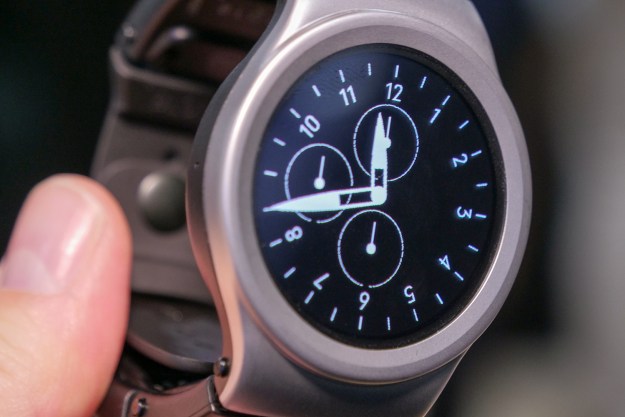
“Robust, easy-to-use modules and a great design give the Blocks Core a strong chance to make mobile modularity work.”
- Subtle design
- Easy-to-use modules
- Decent array of module choice at launch
- Strong potential for more modules in the future
- Simple software interface
- Operating system can be sluggish
- Depends on more modules launching in the future
It may look like just another touchscreen smartwatch, but the Blocks Core is very different from other wearables out there. Not only does the Blocks Core run full Android 8.0 Oreo like your smartphone, it’s modular, meaning its functionality can be expanded using plug-in sections that make up the strap. Blocks has been years in the making, and the watch you see here is the result of $4 million in investment. In our Blocks Core hands-on review, we strap it on our wrist to see if the wait — and the money — was worth it.
The Blocks Core is very different from other wearables out there.
The Blocks Core, the name given to the smartwatch section, can be worn with any 22mm strap and acts like a standard smartwatch. You get notifications, along with all the other usual features, and can track your steps and control music playback from your phone. However, this isn’t the reason why you’d buy Blocks, or what makes it cool. Tiny clip-in modules add new features to the watch, turning it from a basic device into one that’s far more complex.
Wearables have become considerably better-looking over the past year, and although it cannot quite match the delicious style of the Diesel On Full Guard or the Movado, it does have a certain minimalist appeal. It comes in either black or gray, and is entirely without visual flourishes. The side button is oblong, and the body a combination of metal and plastic. The modules look like oversize metal band links, and clip into the body and each other, daisy-chaining together to add features to the watch.
Clipping modules in takes little more than a solid push before they’re very secure once in place. They have a degree of movement to adapt to wrist sizes, and feel substantial enough that they won’t break easily. However, we wouldn’t want to get it caught on something that would give it a strong tug. It may not break, but you’d run the risk of it coming apart and the watch falling to the ground.
Blocks uses Android 8.0 Oreo and not Android Wear because
Blocks envisions its modular smartwatch as a platform.
How do the modules work? It’s really easy. Plug a module in and the software instantly recognizes it, with no further setup needed. Controlling apps are all built-in and accessed either by customizable complications on the watch face, or through the main menu system. We tried out the four modules that are initially available for Blocks, and were really pleased to see how simple the interface made them to use. It’s the main part of Blocks’ appeal, and it’s obvious that plenty of time and effort has been spent getting the fit and use exactly right.
There’s good news on the battery life, too. It’ll last a day with all four modules plugged in and used normally, which is about what we’d expect from a fully featured smartwatch with GPS, heart rate tracking, and various sensors. The software cleverly puts the modules to sleep when they’re not in use, and through this and Android 8.0’s power management, battery life extends to about 40 hours. You can remove the modules when you don’t need them, but it won’t be necessary in order to lengthen standby.
Blocks envisions its modular smartwatch as a platform. This means it’s actively encouraging others to make modules for the watch, potentially giving companies and startups without the funds to build an entire wearable a way to still make their ideas a reality. Because of the modularity, market appeal of any new module isn’t as important, meaning niche sensors and features could come to life. The more sensors that are available, the more people will be encouraged to buy a Blocks smartwatch, resulting in a growing, healthy user base.
Modularity isn’t new in the mobile world, but it hasn’t been hugely successful yet. LG tried and failed with the LG G5 and its Friends, while Google gave up on Project Ara — which Blocks was often compared to in its early stages — before it even got started. Motorola has come closest to making modular accessories mainstream, along with devices from Fairphone and to a lesser extent, Essential. Modular devices live and die by the amount of modules available, and the amount of people buying the core device.
We’d like to see Blocks succeed. The system makes good sense for smartwatches, which are still relatively niche devices where more functionality could provide wider appeal, and Blocks’ system is robust and easy to use. It’s priced sensibly, and it’s a reality now, rather than a future project that may or may not launch. You can pre-order Blocks Core for $260 and the module pack for $140. The first examples are shipping now, but you’ll have to wait for the backlog to clear over the coming month or two to get yours. We think you’ll enjoy it.








